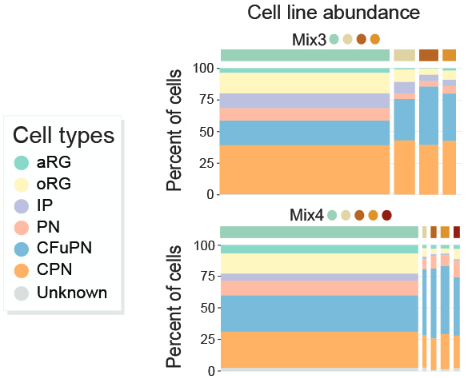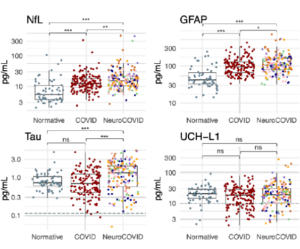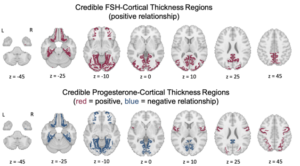
“Multi-donor human cortical Chimeroids reveal individual susceptibility to neurotoxic triggers.”
Noelia Antón Bolaños, et al. – Harvard University.
Background: Studies using 3D organoids from single human-derived stem cell lines fail to capture inter-individual differences. Prior attempts to blend lines from multiple donors in 3D organoids have failed due to cells from certain lines outcompeting those from others, leading to a relatively homogenous culture.
This study: By aggregating cells from different lines at the neural stem cell stage, Bolaños et al. were able to generate “Chimeroids” (chimeric organoids) that included all cortical cell types from each of 4 or 5 donors. Lines which are able to outcompete other donor lines in more conventional protocols are kept in relative balance using this protocol. Using this approach, the authors screened for variable susceptibility to the neurotoxins ethanol, which causes Fetal Alcohol Spectrum Disorder, and valproic acid, which increases risk of offspring developing autism spectrum disorders when given during pregnancy. Future studies should examine the practical limits of how many donors can be multiplexed in a single Chimeroid. Since total cell counts do not necessarily scale with the number of donors, it appears likely that there is an inverse relationship between number of donors and number of cells generated per donor; how many donors can be combined before there are too few cells for adequate profiling?
Bottom Line: By multiplexing several donor lines into a single culture, Chimeroids have the potential to vastly improve understanding of inter-individual differences through in vitro studies, as well as reduce the probability that the results of in vitro studies are due to donor-specific factors that do not generalize to the broader population.






